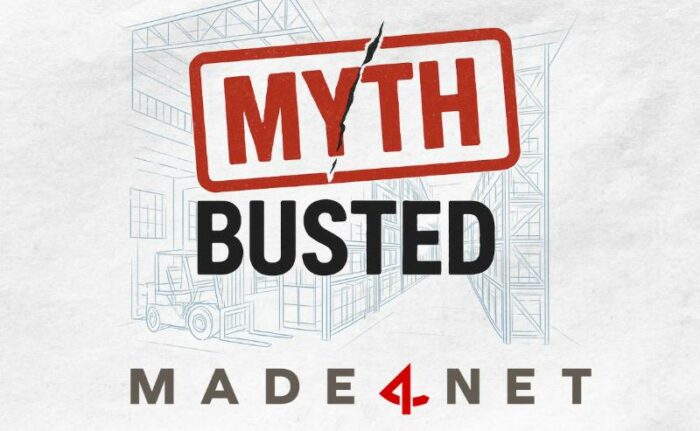
In today’s dynamic business landscape, efficient warehouse management is crucial for companies looking to stay competitive and meet customer demands. A robust Warehouse Management System (WMS) can significantly enhance operational effectiveness, improve inventory visibility, optimize space utilization, and streamline warehouse processes. However, selecting the right WMS requires careful consideration and research to ensure it aligns with your specific business needs. In this blog post, we will explore the value of a WMS and provide a guide to selecting the ideal solution for your organization.
- What Is the Role of a Warehouse Management System (WMS)?
- What Are the Benefits or Advantages of a Warehouse Management System?
- WMS Benefit #1: Improved Space Utilization and Decreased Operating Expenses
- WMS Benefit #2: Superior Inventory Visibility and Tracking
- WMS Benefit #3: Enhanced Labor Efficiency
- WMS Benefit #4: Streamlined Warehouse Processes
- WMS Benefit #5: Orchestration of Automation within the Operation
- WMS Benefit #6: Improved Service Levels and Customer Satisfaction
- How to Make Sure You Realize These Advantages When Selecting a WMS
- Key Warehouse Management System Functions
- What Is the Best Warehouse Management System?
What Is the Role of a Warehouse Management System (WMS)?
The role of a WMS is to be a system in which the daily operations within a distribution center (DC) are controlled and managed. WMS software has come to encompass how you receive inventory, how you store it, how you pick items for shipment and how you know when to order more. Because there’s so much interconnectivity built in, software naturally makes these processes cleaner, easier to track, and less susceptible to human error. These software solutions offer visibility into a business’s entire inventory and manage supply chain execution from the distribution center to the store shelf.
However, not all warehouse management systems are created equal. When searching for the right WMS system for your business, it’s a matter of finding what’s right for you and then being flexible enough to adapt as external factors and conditions shift or the business grows. Please note that WMS is not to be confused with WCS and/or WES, but how they overlap should be understood.
What Are the Benefits or Advantages of a Warehouse Management System?
An advanced warehouse management system offers a variety of benefits, with primary features of inventory control, productivity and space utilization. A high level of inventory control where businesses can gain a 360-degree view of inventory levels and locations will enable greater efficiency throughout the entire supply chain, making it a critical component of your WMS solution. Through the implementation of the proper warehouse management system, order management will become a strength and can boost your customer service levels. In a globally connected marketplace, an optimized WMS enables businesses to focus on other areas of growth.
A well-implemented WMS can deliver numerous benefits, positively impacting various aspects of warehouse management and overall business performance. Here are some key advantages of implementing a WMS:
WMS Benefit #1: Improved Space Utilization and Decreased Operating Expenses
A WMS enables efficient space allocation and utilization, helping maximize storage capacity. By optimizing warehouse layout and accurately tracking inventory, you can reduce wasted space, minimize carrying costs, and ultimately decrease operating expenses.
WMS Benefit #2: Superior Inventory Visibility and Tracking
A WMS provides real-time visibility into inventory levels, locations, and movements. Accurate inventory tracking minimizes stockouts, prevents overstocking, and improves order fulfillment accuracy. With better inventory visibility, you can make informed decisions, optimize replenishment strategies, and reduce carrying costs.
WMS Benefit #3: Enhanced Labor Efficiency
Efficient task allocation, guided picking and packing processes, and automated workflows offered by a WMS improve labor productivity. By reducing manual errors, eliminating paper-based processes, and providing intelligent work direction, the system helps streamline warehouse operations and optimize labor resources.
WMS Benefit #4: Streamlined Warehouse Processes
From inbound receipts to outbound deliveries, a WMS streamlines the entire warehouse process. It automates tasks such as receiving, put-away, picking, packing, and shipping, ensuring accuracy and efficiency at each stage. By reducing manual touchpoints and improving process flow, you can minimize errors, eliminate bottlenecks, and accelerate order fulfillment.
WMS Benefit #5: Orchestration of Automation within the Operation
A modern WMS seamlessly integrates with automation technologies, such as robotics, conveyors, and sortation systems. By orchestrating these automated processes, a WMS optimizes throughput, increases operational speed, and enhances overall warehouse efficiency.
WMS Benefit #6: Improved Service Levels and Customer Satisfaction
With a WMS in place, you can achieve higher service levels by ensuring on-time deliveries, accurate inventory information, and reliable data. Meeting customer expectations leads to increased satisfaction, improved customer retention, and enhanced competitiveness in the marketplace.
How to Make Sure You Realize These Advantages When Selecting a WMS
To choose the most suitable WMS for your organization, consider the following factors:
Define Your Needs
Create a comprehensive list of both must-have and nice-to-have features and functionalities that align with your warehouse requirements. Determine the specific business case for implementing a WMS, such as addressing existing warehouse challenges, improving inventory visibility, or adapting to changing distribution models.
Evaluate Potential Vendors
When assessing WMS vendors, gather information on:
- Functionality: Ensure the system offers the specific features you require to address your warehouse needs effectively. (See below for key functionality to consider.)
- Licensing Costs: Understand the pricing structure and licensing fees associated with the WMS.
- Deployment Costs: Consider implementation costs, including hardware, software, and any customization or integration requirements.
- Included Services: Determine the level of support, training, and ongoing maintenance provided by the vendor.
- Project Timeline: Assess the typical duration and implementation timeline for the WMS project.
- Ease of Configuration: Evaluate how easy it is to configure and customize the system to meet your unique business processes.
- Vendor Dependence: Understand the level of dependency on the vendor for ongoing support and system updates.
Assess Return on Investment (ROI)
Utilize tools like a High-Level ROI Calculator to objectively evaluate the potential ROI of implementing a WMS. By analyzing the financial benefits and cost savings that the system can generate, you can make an informed decision on whether a WMS aligns with your operational and financial goals.
Key Warehouse Management System Functions
Your warehouse management process incorporates all the steps your staff needs to take in order to get your products from your warehouse to your customers—quickly and efficiently. This primarily consists of functions like inventory delivery to your warehouse and how that inventory gets stored, in addition to order picking, packing and ultimately shipping to customers.
Here are the key functions of a warehouse management system to consider.
WMS Function #1: Inventory Reception/Tracking
The first step in your WMS responsibilities begins when the inventory arrives. You need to track what arrives, when it arrives and store it in a way that allows you to retrieve it quickly.
WMS Function #2: Picking and Packing
When an order comes through, it must be quickly and accurately picked from its storage location to match a client’s order. A WMS should generate pick lists for each picker to retrieve items in the most efficient way. From there, a packer will place items securely in a shipping container.
WMS Function #3: Shipping
This includes the delivery options and shipping services offered to customers. Your WMS includes the completed order details and provides order tracking details for the customer.
WMS Function #4: Reporting
Your software not only tracks where the inventory is in the system, but it can provide records that summarize the health of the overall system. These reports indicate how quickly orders are fulfilled and how accurate your fulfillment is, leading to data-driven decisions.
What Is the Best Warehouse Management System?
This depends on your specific business and the options potential vendors provide. It may be more helpful to first conceptualize how to choose a warehouse management system. This should lead to the best WMS vendor for you. Remember that choosing a warehouse management system should solve specific requirements you need to be fulfilled. If possible, avoid choosing based on price rather than function. A low-cost solution that doesn’t meet your needs can end up costing more down the line when it no longer meets your needs as the business shifts and grows. Make sure the vendor breaks down gaps in how its system overlays upon your processes prior to signing a contract with the vendor. These agreements will have long-lasting impacts on how your company functions.
Conclusion
You’ll know you need a new WMS because you recognize there is untapped operational potential in your warehouse. What’s become increasingly beneficial, is the ability to capture sophisticated performance and inventory metrics in real-time to understand and visualize the status and quality of your inventory. By understanding the benefits that come in the short-term and last for the long-term with the right system and proper implementation, you can ensure a successful WMS selection and implementation.
Making sure your organization is following a proper WMS implementation methodology will significantly improve chances of successfully going live with a new, well-designed and thoroughly tested warehouse management system. To understand if it is time to purchase, upgrade or replace your WMS, take our WMS Readiness Quiz here.
Thank you to our partner, enVista for this insightful blog.
Author: enVista


